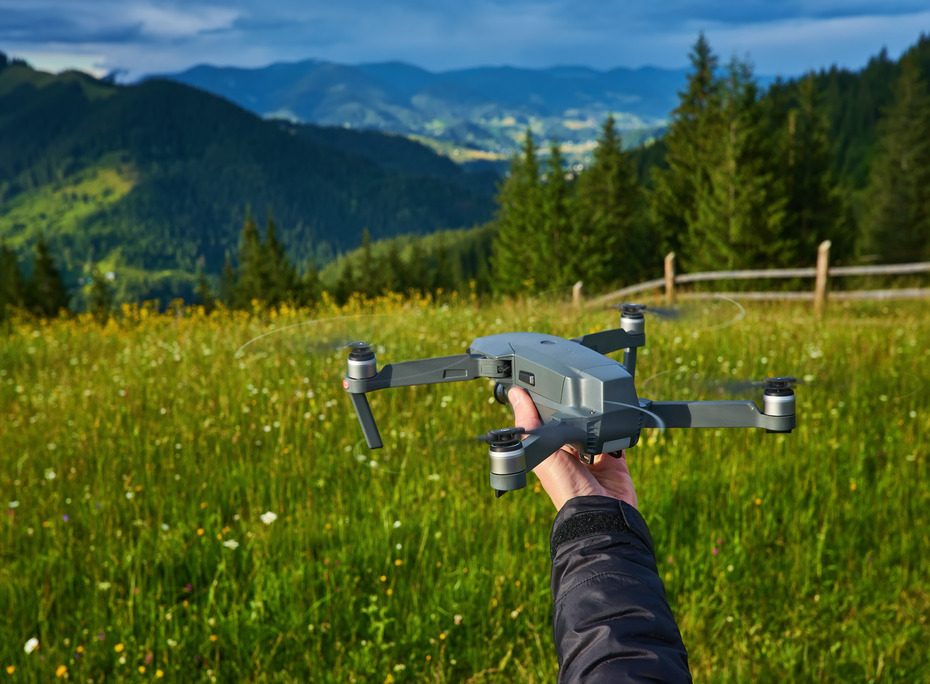Integrating advanced technology into environmental and wildlife conservation efforts opens new horizons for protecting our planet’s natural resources and biodiversity. Their unique capabilities to reach inaccessible areas, collect detailed data, and monitor vast landscapes in real-time are transforming how conservation efforts are planned and executed. This article dives into the strategic deployment of drones in environmental and wildlife conservation. Highlighting their impact and potential in various conservation endeavors.
Monitoring Ecosystem Health and Biodiversity
Drones is crucial in monitoring the health of the environment and the diversity of species within them. Drones, like Skydio X10 Drone, are becoming pivotal tools for conservationists worldwide. They have high-resolution cameras and other sensors, and drones can survey large areas of land and water, capturing detailed images and videos that help scientists assess the condition of natural habitats. This aerial perspective is invaluable for tracking changes over time and identifying threats such as deforestation, habitat destruction, and illegal activities. By providing a bird’s-eye view, drones offer a non-intrusive means of studying wildlife populations and plant health, enabling conservationists to make informed decisions about protecting and restoring biodiversity. Additionally, the data collected can help document rare species, understand their distribution, and identify critical habitats that require protection or restoration efforts, ensuring targeted and effective conservation strategies.
Anti-Poaching Operations and Wildlife Protection
The strategic deployment of drones is revolutionizing anti-poaching operations. In regions plagued by illegal wildlife trade, drones with night vision or thermal imaging cameras can patrol protected areas, detect poachers from afar, and alert authorities in real-time. This capability allows for rapid response, significantly reducing the risk to endangered species. Drones act as a deterrent to poachers, who are less likely to target areas under surveillance. Furthermore, drones can track the movements of animals, providing insights into their behavior and habitat use, which is crucial for using effective conservation strategies. Using drones in anti-poaching efforts not only helps in the direct protection of wildlife but also gathers evidence that can be used to prosecute illegal activities, strengthening the overall law enforcement response to wildlife crime.
Habitat Restoration and Reforestation Efforts
Drones are tools for monitoring and protection and agents of change in habitat restoration and reforestation projects. They can be used to map degraded areas, identify suitable sites for restoration, and even directly contribute to reforestation efforts. Some drones are designed to distribute seeds over large areas efficiently, planting thousands of trees in a fraction of the time it would take humans to do so manually. This innovative approach to reforestation is cost-effective and scalable, offering a promising solution to combat deforestation and habitat loss, ultimately supporting the recovery of ecosystems and the species that depend on them. Beyond seeding, drones can monitor the growth and health of newly planted areas, providing ongoing data that helps assess the success of restoration efforts and guide future actions, ensuring that restored habitats can sustain healthy wildlife populations.
Research and Data Collection
The versatility of drones makes them powerful tools for environmental research and data collection. Scientists can deploy drones to gather data on climate conditions, water quality, soil composition, and more without extensive fieldwork. This capability saves time and resources and reduces the environmental impact of research activities. Drones can access remote, hazardous, or otherwise inaccessible areas. Providing valuable data that enhances your knowledge of ecological processes and how they are changing in response to human activities and climate change. This extensive data collection aids in the creation of more accurate models and forecasts. It helps in improving our ability to predict environmental changes. Also, develops strategies to mitigate or adapt to these changes, ultimately contributing to more resilient ecosystems.
Community Engagement and Education
Drones also play a significant role in conservation community engagement and education efforts. By capturing stunning aerial footage of natural wonders, drones can inspire and educate the public about the importance of conservation. These images and videos can be powerful tools in advocacy campaigns. They are raising awareness about environmental issues and mobilizing support for conservation initiatives. Moreover, drones can be used in educational programs. Giving students and community members a unique perspective on their local environments and their challenges. Through interactive and engaging content, drones can have a connection between communities and their natural surroundings. Encouraging a collective effort towards conservation and sustainable living and empowering individuals to take action in preserving the environment for future generations.
Conclusion
The strategic deployment of drones, as exemplified by models like the Skydio X10 Drone, is profoundly impacting environmental and wildlife conservation. From monitoring ecosystems and combating poaching to aiding in habitat restoration and supporting research. Drones offer versatile, efficient, and practical solutions to some of the most pressing conservation challenges. As drone technology advances. Its integration into conservation strategies promises to enhance further our ability to protect and preserve the natural world. The future of environmental and wildlife conservation is undoubtedly taking flight with the help of aerial innovations. It is paving the way for a more sustainable and biodiverse planet.

